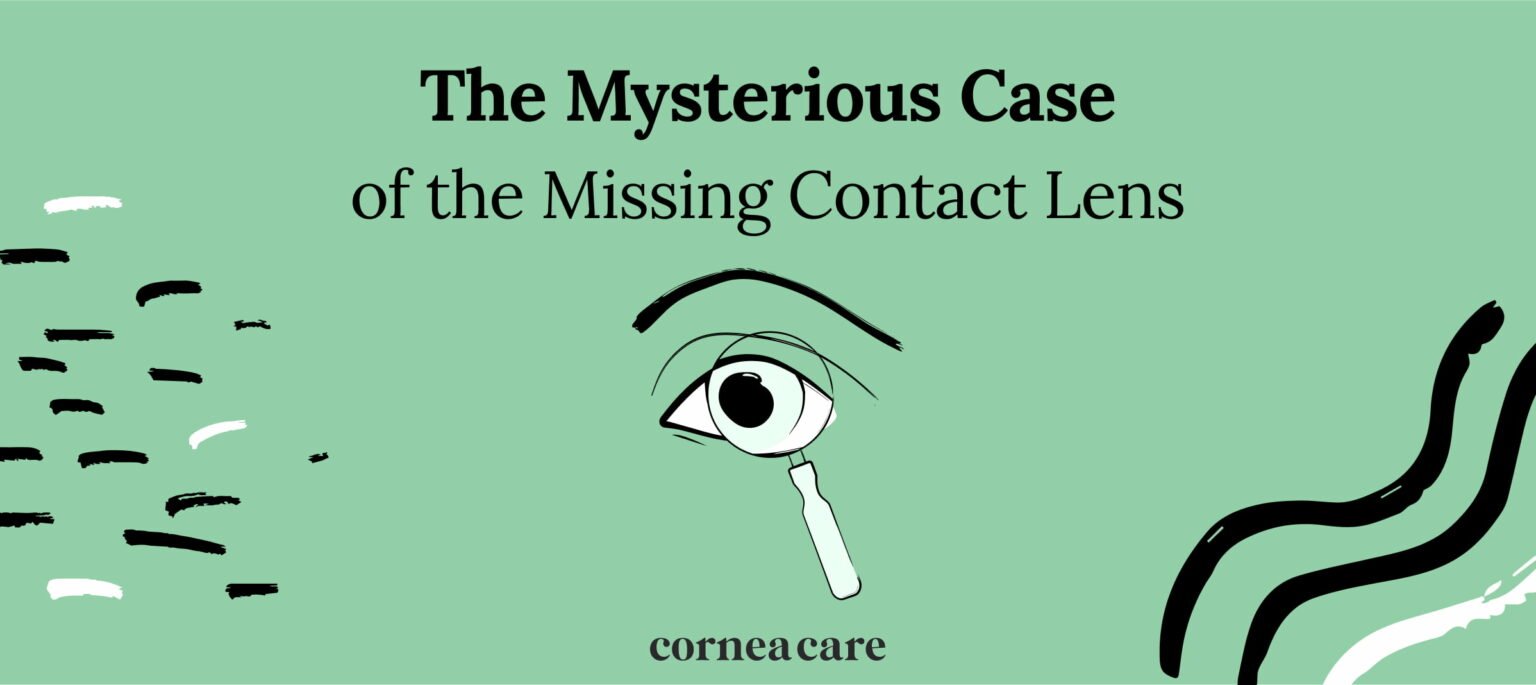Is My Contact Lens Still in My Eye?
In the United States, over 45 million people wear contact lenses.1 For many patients who require vision correction, contact lenses are preferred because they offer more convenience than eyeglasses.
It’s perfectly normal for a contact lens wearer, even if you do everything correctly, to occasionally have difficulty removing your lenses. You may worry if a contact lens is still stuck in your eye.
You’re most likely to lose a contact lens while inserting or removing your lenses. You can also dislodge your lens by rubbing your eyes. It’s frustrating and can cause some mild discomfort.
It’s important though not to panic. Remember, even if your contact lens has seemingly disappeared under your eyelid, it will not be lost forever behind your eye!2
Key Points
- Always wash your hands before touching your eyes or contact lenses, and be very gentle as you remove the lens.
- Using artificial tears to lubricate your eye, and blinking repeatedly, can help ease a dislodged contact lens out of your eye naturally.
- Thanks to the way your eyes are structured, even if your lens appears to be missing, it can’t get lost in your eye forever.
How to Tell if a Contact Lens is Still in Your Eye
Getting a lens stuck under an eyelid or flat against the cornea can happen to any contact lens wearer. Temporarily losing track of a contact lens in your eye often occurs due to the lens drying out or you accidentally moving the lens while rubbing your closed eyes.
The first step to removing a stuck contact lens is to determine whether it’s in there at all. Before you go poking around your eyes, which can lead to damage or irritation, look everywhere around you first. Your contact lens may have fallen out of your eye. You may find it on your face, your clothes, or a nearby surface like the sink vanity, a table, or even the floor.
Contact lenses often have a light tint, even the clear ones, to help you find them when they fall out. Search around you thoroughly so you can tell for sure if the contact lens is still in your eye.
If your contact lens is stuck in your eye you may notice discomfort such as:
- The feeling of something in your eye (foreign body sensation)
- A scratchy feeling in the eye
- Burning sensation
- Red, irritated eyes
- Pain when opening your eyes
In many cases, having a lens stuck in your eye doesn’t feel any different than having a lens in its proper position.
Have a look in the mirror
If you can’t find the lens outside your eye, take a close look at your eye in a mirror. If your contact lens is in the right place, you should see the edge of the lens around your iris (the colored part of your eye).
You may find your contact lens in place but slightly folded along the edges. Try gently rubbing your upper eyelid or blinking repeatedly, to correct the problem and get the lens unfolded.
If you can’t tell if your contact lens is still in your eye, gently pull down your lower eyelid with clean fingers and try to locate it there.
If you haven’t found the contact lens stuck in your lower eyelid, gently lift the upper eyelid while tilting your head back slightly. The lost contact lens may be stuck up there.
In case you still can’t see the lens, look in the opposite direction of where you think it’s stuck. So if you feel it’s stuck on the left, look to the right. If you feel the contact is stuck near your upper eyelid, look down. And vice versa.
Once you know if the contact lens is still in your eye, the following tips can help you remove it. The process differs depending on the type of contact lenses you wear.
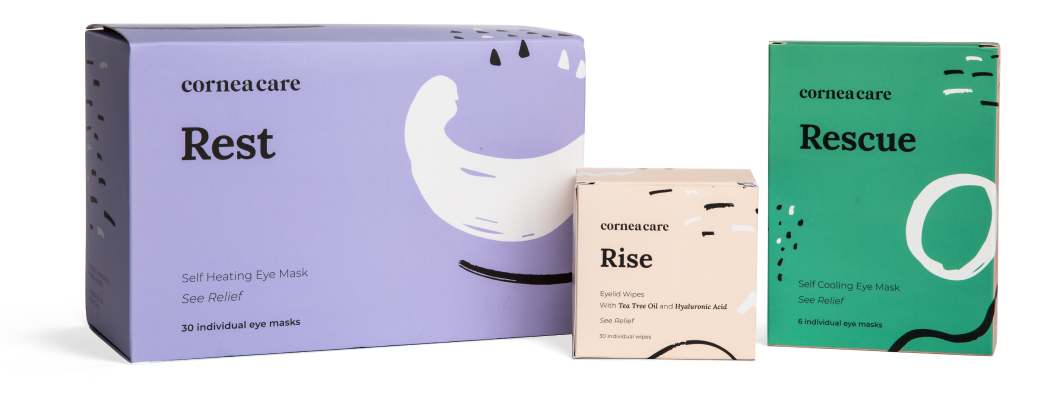
All Rounder
Eyelid Hygiene Plan 3
Perfect for eye dryness, burning, itching, grittiness, crusting/flaking of eyelashes and inflamed/swollen eyelids. Free shipping 📦.
Try today - $60
How to Remove a Contact Lens Still in Your Eye
Always wash your hands with mild soap before handling contacts or touching your eyes or eyelids. Avoid using cream soaps or lotions on your hands. These products can leave a residue that can transfer to the contact lens or the surface of your eye.
Start by moistening your eye with rewetting drops or artificial tears (not contact lens solution). Use two fingers of one hand to hold your eye open while you add eye drops to your eye with the other hand. Lubricating your eye can help loosen the contact lens, especially if it is stuck due to dry eyes.3
In most cases, you’ll easily find and recover the stuck contact lens in a few minutes. However, don’t panic if it takes longer. Your contact lens cannot get lost behind your eye. Take a break, relax with some deep breaths, and try again after you feel calm.
With the absence of pain or signs of irritation, you can allow the lens time to find its way out of your eye or at least to a place where it’s easier for you to remove it with your clean fingers. Recheck your eye after half an hour or so.
How to remove a soft contact lens stuck in your eye
Soft contact lenses are the most popular among contact lens wearers. Soft lenses are comfortable to wear and come in different options including daily disposables which are removed and discarded after each use. Extended-wear soft lenses are designed for monthly use.4
Soft lenses are made of flexible plastic material and can get stuck to your eye if they dry out.4 This most often occurs if you sleep with your contacts in, fail to dispose of them on schedule, or if your contact lenses are not a good fit.
To remove a stuck soft contact lens, first, wash your hands with mild soap and water.
Next, place a few drops of lubricating artificial tears into the eye. By moistening your eye, the contact may slide into view so that you can gently pinch it with your clean fingertips and remove it.
Gently stretch your eyelid upwards and to one side. Look closely under the eyelid to locate the missing lens. Once you find it, gently nudge the contact out of your eye using your clean fingertip.
If a soft contact lens is stuck under an eyelid, try gently massaging your eyelid. Doing this can coax the lens down to a part of the eye where you can easily retrieve it.
It’s possible for a soft contact lens to tear or rip as you insert or remove it from your eye. As you remove the lens to replace it with a new one, pieces of the lens may remain stuck to your eye. These stray bits of lens often find their way beneath your eyelid.
To remove pieces of a torn contact lens, wet your eyes and carefully use your clean fingertip to slide the torn bit toward the outside corner of your eye and remove it.
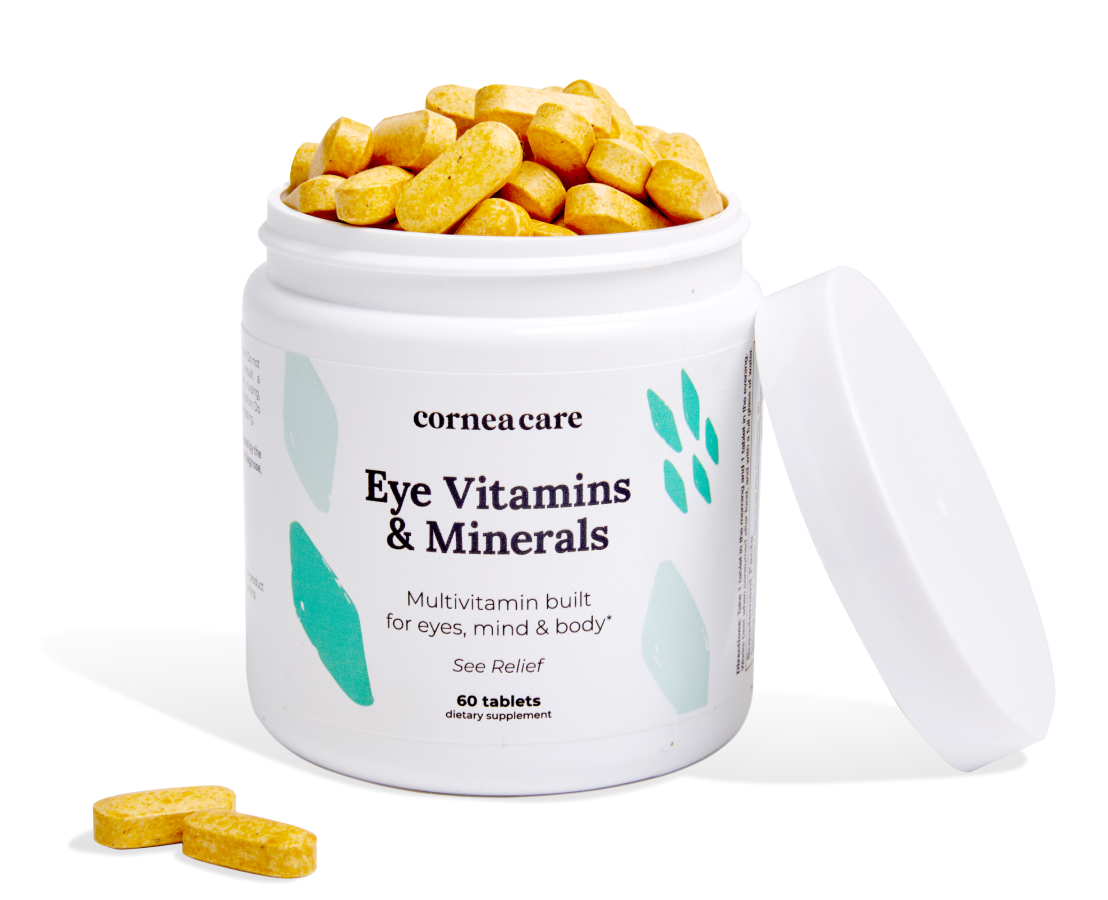
Multivitamin
Eye Vitamins & Minerals
A single multivitamin to address the nutritional needs of your eyes, mind and body. 📦 Free shipping.
Try today - $35
How to remove a hard contact lens stuck in your eye
Hard contacts, also known as rigid gas-permeable (RGP) contact lenses, are less popular with contact lens wearers. Though they are less comfortable than soft contact lenses, they are more durable and therefore, less expensive over time.4
Like soft lenses, RGP contact lenses can get stuck in your eyes, though less often than their soft counterparts. When a hard contact lens goes missing in the eye, the process of retrieving it is different than removing a missing soft lens.
Most importantly, do not massage your eyelids if you are wearing hard lenses. Since hard contacts are more rigid, they can scratch your eyeball as they move.
To remove a dislodged hard contact lens, first, wash your hands thoroughly. Next, look in the mirror and find where the lens has become stuck.
You might also try gently touching a fingertip to your closed eyelid to feel for the missing lens. But be careful not to move the lens.
If you find your contact stuck to the white part of your eye, try to gently press the outer edge of the lens with your clean fingertip to remove it.
You might want to try using a contact lens plunger, also called a lens remover, which is a small suction cup device. You can find these products in the eye care aisle of your local pharmacy.
To use a lens remover, wet the suction cup with saline solution and then press the cup to the contact lens and remove it. Be careful not to touch your eye with the lens plunger, as it can cause damage to your eye.
If the Contact Lens is Still Stuck in Your Eye
If you still can’t see or feel the lens anywhere, most likely it’s no longer in your eye. However, you can continue to lubricate your eye, or try to make yourself cry with a sad song or movie. Another way to stimulate tear production is to gently pull your upper eyelid down over your lower eyelid.
Continue crying and blinking until you feel the contact lens move, then check the mirror to locate the missing lens and remove it. Your tears may naturally move the lens to the corner of your eye, making it easy to retrieve.
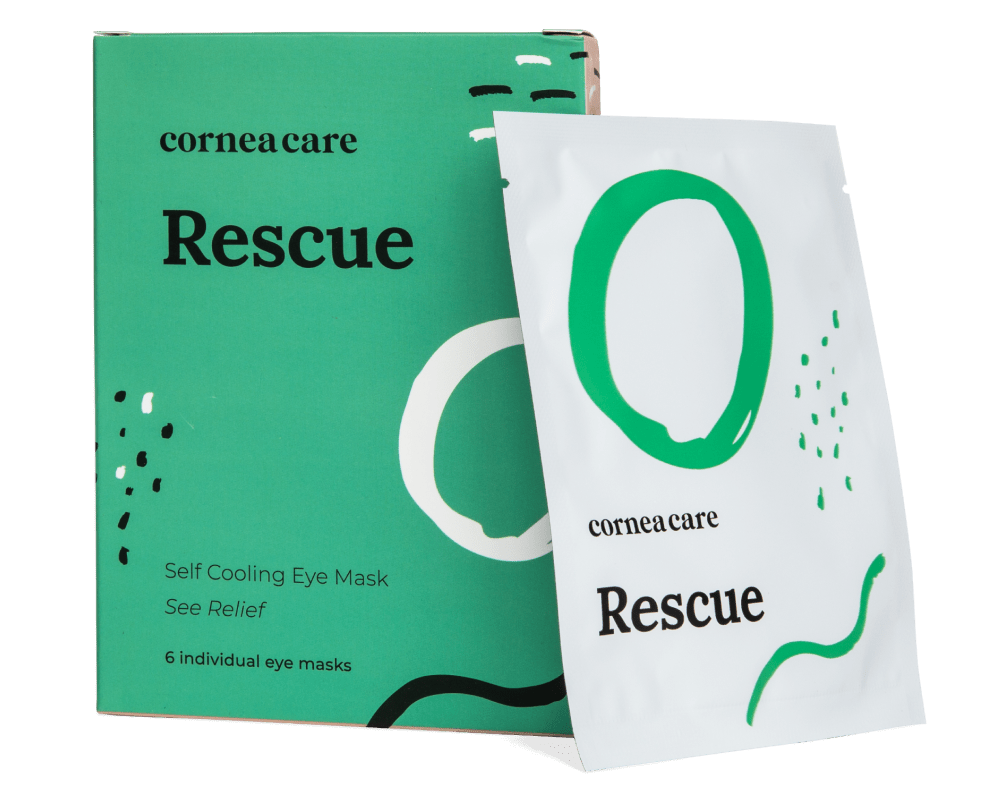
Rescue
Cold Compresses
Perfect for sudden flare-ups of eye dryness, pain, burning, and swollen/inflamed eyelids. Free shipping 📦.
Try today - $12
Tips for New Contact Lens Wearers
Millions of people choose to wear contact lenses instead of glasses because, in general, contact lenses are very comfortable. When inserted correctly, you’ll barely feel your lenses are there.
Of course, that makes it harder to tell if your contact lens is still in your eye, especially if you have a mild prescription. If you require a strong prescription for vision correction, you can simply look to see if things around you are clear or blurry to determine if your lens is in the right place.
Always follow the instructions you receive from your optician or eye doctor when you first get contact lenses. Make sure to remove contact lenses from your eyes at the recommended time. This can help keep your contact lenses from getting stuck in your eyes or causing other eye problems, such as dry eyes, corneal warping, eye infections, and blindness.1
These tips can help you prevent getting your contact lenses stuck in your eyes:
- Always remove contacts before you sleep
- Avoid showering or swimming with contact lenses
- Replace contact lenses when recommended by your doctor
- Wear glasses when your eyes are irritated
- Avoid rubbing your eyes while wearing contact lenses
- Get treated if you have symptoms of dry eye disease
When to See a Doctor if Contact Lens is Still in Eye
If you’ve tried the suggestions above, and your contact lens is still stuck in your eye after a few hours, it’s time to contact your optometrist or ophthalmologist.
Even if you’ve removed the contact lens or lens pieces, if you still experience eye pain, irritation, or redness after a few hours, contact your eye doctor. It’s possible that you have scratched the surface of your eye, even if you successfully removed the stuck lens.
If your contact lens often gets stuck in your eye, let your eye doctor know. An eye care professional can help determine if dry eyes are the reason your contact lenses still get stuck in your eyes.3
While you can wear contacts if you have dry eyes, see your eye doctor for an eye exam to determine whether contacts are a good choice for you. Read more about Wearing Contacts with Dry Eyes.
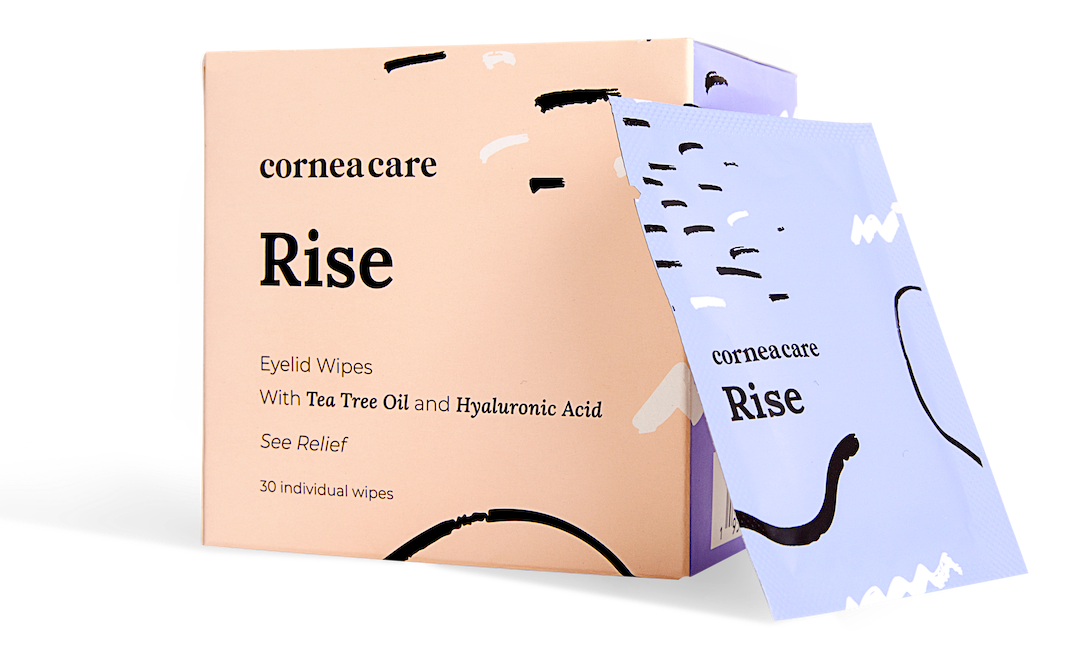
Rise
Eyelid Wipes
Perfect for eye dryness, itching, burning, and crusting/flaking of eyelashes. Free shipping 📦
Try today - $25
Contact Lens Still in Your Eye FAQ
Yes, a stuck contact lens will eventually come out, but it may take some time and patience. Blinking frequently, applying lubricating eye drops, or gently massaging your eyelid can help dislodge the lens. If you’re unable to remove it after several attempts, it’s best to seek help from an eye care professional.
You can usually tell if a contact lens is still in your eye by checking for discomfort, irritation, or blurry vision. If you feel like something is in your eye or experience redness and watering, the lens might still be there. Using a mirror and good lighting, gently check the surface of your eye and the area under your eyelid.
Going to the ER for a stuck contact lens is generally unnecessary unless you’re experiencing severe pain, significant redness, or vision loss. If you can’t remove the lens yourself and it’s causing discomfort, visit an eye care professional as soon as possible for safe removal.
Putting It All Together
It’s perfectly normal to get a contact lens stuck in your eye once in a while. Simply use clean hands and a gentle touch to find and remove the lens.
If your lenses get stuck frequently, or you experience pain and irritation after retrieving a missing lens, be sure to see your eye doctor to talk about the best options for your eye health.
What’s Next
You may be interested in reading these other articles about contact lenses on our blog!


